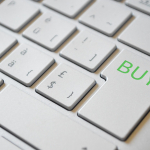Building an emergency fund is a crucial step toward financial security, yet many overlook its importance. An emergency fund acts as a safety net, providing a buffer during unexpected situations like job loss or medical emergencies. By assessing your current financial situation and understanding your unique needs, you can create a plan that empowers you to start saving effectively. In this ultimate guide, you’ll discover practical steps and valuable tips for establishing and maintaining your own emergency fund today. Taking control of your finances begins here, ensuring you are prepared for whatever life throws your way.
Understanding the Importance of an Emergency Fund

An emergency fund is a financial safety net that helps you navigate unexpected expenses without derailing your financial stability. Here’s why establishing one is crucial:
- Financial Security: An emergency fund provides peace of mind, knowing you have resources available for unforeseen situations like medical emergencies, car repairs, or job loss.
- Avoiding Debt: With a dedicated fund, you can cover emergency expenses without relying on credit cards or loans, which can lead to debt and high interest payments.
- Flexibility: A well-maintained emergency fund allows you to take calculated risks, like changing jobs or pursuing further education, without the constant worry of your finances.
- Budget Relief: It can help prevent financial strain on your regular budget because you are not reallocating funds meant for living expenses.
In summary, an emergency fund enables you to manage life’s uncertainties confidently. Start building yours today to safeguard your financial future!
Assessing Your Current Financial Situation
Before you can successfully build your emergency fund, it’s essential to assess your current financial situation. This step lays the foundation for effective budgeting and saving. Here are key elements to consider:
- Income: Calculate your monthly take-home pay, including any side income. Knowing your total income will help you determine how much you can allocate to savings.
- Expenses: List all monthly expenses, categorizing them as fixed (rent, utilities) and variable (groceries, entertainment). Understanding your spending habits allows you to identify areas for potential cuts.
- Debt: Consider outstanding debts, such as credit cards, student loans, or personal loans. High-interest debts might need prioritizing before contributing significantly to your emergency fund.
- Current Savings: Take stock of any existing savings or funds. Are they designated for specific purposes or can they be adjusted to support your emergency fund goals?
By creating a clear picture of your financial landscape, you empower yourself to establish realistic savings targets and make informed decisions on how to allocate your money effectively.
Steps to Build Your Emergency Fund
Building an emergency fund is a critical step towards financial security. Follow these structured steps to establish a robust fund:
- Set a Target Amount
Aim for at least three to six months’ worth of living expenses. Calculate this based on your monthly costs, including rent, utilities, groceries, and other bills. - Create a Budget
- List your income and all expenses.
- Identify areas where you can cut back.
- Allocate a specific amount towards your emergency fund each month.
- Open a Separate Savings Account
Choose a high-yield savings account to earn interest while keeping your emergency fund accessible. This prevents the temptation to dip into your fund for non-emergencies. - Automate Your Savings
Set up automatic transfers to your emergency fund each payday. This simple step removes the hassle of remembering to contribute regularly. - Monitor and Adjust
Regularly check your progress and adjust contributions as necessary, especially if your financial situation changes.
By following these steps, you’ll build your emergency fund methodically and effectively, reinforcing your financial resilience.
Tips for Maintaining Your Emergency Fund
Once you’ve successfully established your emergency fund, it’s essential to maintain its integrity and availability. Here are some useful tips:
- Regular Contributions: Commit to adding a fixed amount monthly. Treat it like any other essential bill.
- Use a Separate Account: Store your emergency fund in a high-yield savings account or money market account. This keeps it separate from daily spending and can earn interest.
- Set Clear Rules: Define what constitutes an “emergency” to avoid impulse withdrawals. Emergencies might include unexpected medical expenses, car repairs, or job loss.
- Replenish After Use: If you ever dip into your emergency fund, prioritize paying it back as soon as possible. This ensures you’re prepared for any future emergencies.
- Review and Adjust: Periodically reassess your emergency fund goal. Life changes can affect your needs, so adjust your target amount accordingly.
By following these tips, you can protect your emergency fund and ensure it serves its purpose when life throws unexpected challenges your way.
Frequently Asked Questions
What is an emergency fund and why is it important?
An emergency fund is a financial safety net that is specifically set aside for unexpected expenses or emergencies, such as medical bills, car repairs, or sudden job loss. Its importance lies in providing peace of mind; it allows individuals to navigate unforeseen financial challenges without falling into debt or compromising their long-term financial goals. Having an emergency fund ensures that you can meet your essential financial obligations during difficult times, thereby securing your financial future.
How much should I save in my emergency fund?
Financial experts generally recommend saving enough to cover three to six months’ worth of living expenses in your emergency fund. This amount will vary based on your personal financial situation, such as job stability, income variability, and existing financial obligations. Consider calculating your monthly fixed costs—like rent, utilities, groceries, and transportation—and multiplying it by three to six to determine a target amount to save. This ensures that a comfortable buffer exists for emergencies.
Where should I keep my emergency fund?
It’s crucial to store your emergency fund in a place that is easily accessible yet still earns some interest. Ideal options include high-yield savings accounts, money market accounts, or even short-term certificates of deposit (CDs). These accounts typically offer more interest than standard accounts while allowing you immediate access to your funds in case of an emergency. Avoid keeping your emergency fund in cash at home or in accounts with high fees that diminish your savings.
How can I start building my emergency fund if I have limited income?
Starting an emergency fund on a limited income may seem daunting, but it is achievable with careful planning. Begin by setting small, realistic savings goals, such as saving $5 to $10 each week. You may also review your current expenses to identify non-essential items that can be reduced or eliminated to free up funds for savings. Automate your savings by setting up a direct deposit into your emergency fund account to make saving easier. Even small, consistent contributions will add up over time.














Comments are closed.